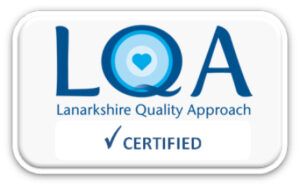Plaster instructions
Information for patients
NHS Lanarkshire Emergency Department
PIL.BARBER.52172.M
Patient Information
You have had a plaster applied to either your arm or your leg.
This is to immobilise and protect the injured part.
Your injury is unique to you and you should have been told what
the injury is and roughly how long the plaster will be in place.
If you are unclear about any aspect of your treatment or injury, please ask advice of the staff directly involved in your care in the Department/Clinic.
The Accident & Emergency Department has initiated your treatment.
The Orthopaedic/Fracture Department of this hospital will be responsible for your continued care.
Plaster care
- Allow 48 hours for your plaster to dry (Allow 2 hours for synthetic material.)
- Allow the plaster to dry naturally.
- Do not get your plaster wet. You must seek advice as soon as the plaster gets wet and not wait as the skin may be at risk of breaking down.
- Do not walk on your plaster unless you have been advised by medical staff to do so.
- Do not abuse your plaster as this may result in longer attendance and failure of the injury to heal.
- If your plaster becomes loose or is broken you must return to the hospital immediately.
- Do not attempt to remove your plaster yourself.
If you are unable to attend your Fracture Clinic appointment please contact us to let us know. Contact information can be found below.
Return to the Accident & Emergency Department if:
- Your plaster begins to feel very tight
- Your hand or foot becomes very swollen
- Your fingers/toes go numb, pale or you cannot move them
Deep Vein Thrombosis (DVT)
If you have a lower limb cast or brace applied and you develop pain in the limb, in particular calf pain, breathlessness or chest pain, you must contact the department immediately or between the hours of 5pm and 9am please go to Accident & Emergency
Please elevate your limb
- Hand higher than your elbow for the first 48 hours
- Foot higher than your hip for the first 48 hours
When in a leg cast. You should remain non weight bearing until the doctor has told you can walk on it. Whilst in cast, when you are not up and about walking the leg should be elevated so that your foot is higher than your hip; this will remain the case until at least one week after you are out of cast. This will help control any swelling you are likely to have. Whilst elevated ensure you continue to wiggle toes frequently.
Your toes may become blue due to bruising or circulatory problems. Should this happen, elevate the limb. It should resolve within a few minutes. If it does not, return to the Department.
Exercise all joints such as fingers and toes outwith the plaster.
A plaster cast is designed to stabilise a bony injury over a period of time allowing the bone to strengthen and form once again into a solid unit. If your plaster is abused and thus weakened it can result in permanent damage and deformity to your limb.
Driving
You are advised to contact your insurance company and DVLA regarding your ability to drive.
Please contact the Hospital you attended:
- University Hospital Hairmyres
- Telephone: 01355 585370
- Monday to Friday – 8.30am – 5pm
- University Hospital Monklands
- Telephone 01236 748748
- Extension 404721
- Monday to Sunday – 8am – 4.30pm
- University Hospital Wishaw
- Telephone 01698 366610
- Monday to Friday – 8am – 4.30pm
Outside these times please contact the Emergency Department or NHS 24.
Emergency Department Contact Information
- University Hospital Hairmyres: 01355 584716
- University Hospital Monklands: 01236 712191
- University Hospital Wishaw: 01698 366630
- NHS 24: 111

Publication date: December 2023
Review date: December 2025
Issue Number: 08
Reference: PIL.BARBER.52172.M
23_29600
If you need this information in another language or format, please e-mail:





